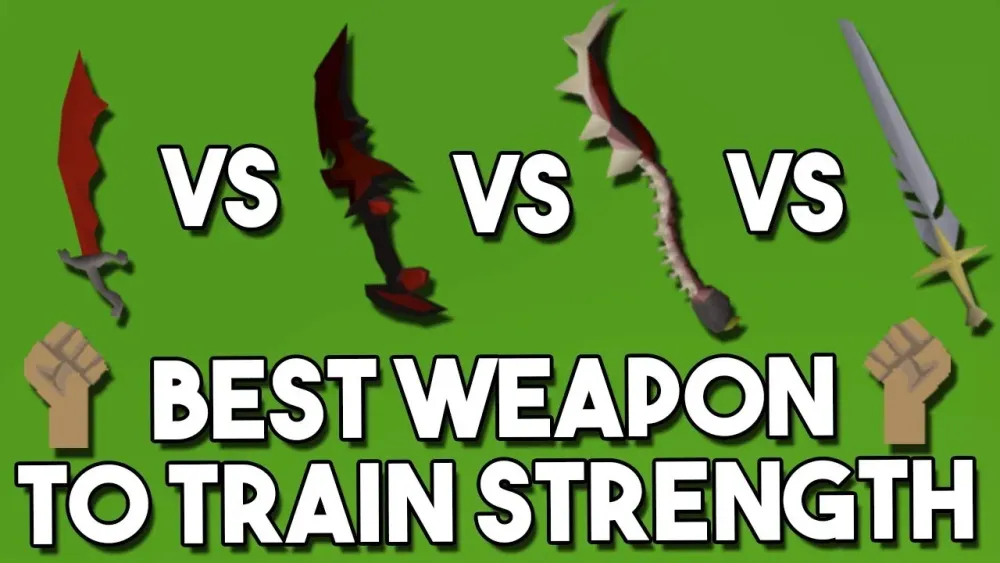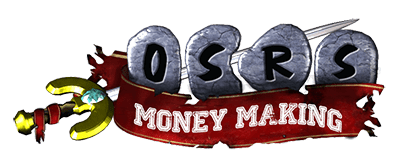Your cart is empty
OSRS Should You Train Strength or Attack First for Optimal Combat

In Old School RuneScape (OSRS), melee combat is a core part of the game, and deciding whether to train Strength or Attack first can shape your early-game experience. This choice impacts your damage output, weapon options, and overall efficiency in combat. With melee skills like Attack, Strength, and Defence defining your character’s prowess, players often debate which skill to prioritize. This guide explores the pros and cons of training Strength or Attack first, offering a clear path for new and returning players aiming to optimize their combat training. Let’s dive into the mechanics, strategies, and recommendations to help you make an informed decision.
Before choosing which skill to train, it’s essential to understand what Attack and Strength do in OSRS melee combat. These skills, along with Defence and Hitpoints, determine your effectiveness in battle.
What Does Attack Do?
Attack governs your accuracy in melee combat and determines which weapons you can equip. Higher Attack levels unlock better weapons with improved stats, such as higher accuracy and damage potential. For example:
- Level 1: Bronze weapons
- Level 40: Rune weapons
- Level 60: Dragon weapons
Training Attack early allows you to wield stronger weapons, indirectly boosting your damage by improving your hit chance and weapon tier.
What Does Strength Do?
Strength directly increases your maximum hit, meaning each successful attack deals more damage. Unlike Attack, Strength doesn’t affect accuracy or weapon requirements but amplifies your damage per second (DPS). A high Strength level is critical for dealing significant damage, especially in prolonged fights.
For instance, at Strength level 50, your max hit with a rune scimitar is higher than at level 30, assuming the same weapon and Attack level.
How They Work Together
Attack and Strength are complementary. Attack ensures you hit more often and can use better weapons, while Strength makes each hit count for more. Balancing these skills is key, but prioritizing one can optimize your training efficiency depending on your goals.
Why Train Strength First?

Many OSRS players advocate training Strength before Attack, especially for those focused on maximizing DPS. Here’s why Strength often takes precedence.
Higher Damage Output
Strength directly boosts your max hit, which is crucial for faster kills. Faster kills mean more experience per hour, as you spend less time in combat. For example, training Strength to level 60 before Attack allows you to deal significant damage with lower-tier weapons like the mithril or adamant scimitar.
Efficiency in Low-Level Training
At lower levels, monsters have relatively low Defence, so accuracy (governed by Attack) is less critical. Focusing on Strength ensures you kill these monsters faster, gaining combat XP more efficiently. Common early-game training spots like chickens or giant rats are ideal for this approach.
Cost-Effectiveness
Training Strength first delays the need to upgrade weapons, saving you gold. You can stick with a rune scimitar (requiring 40 Attack) and train Strength to 70 or higher, maximizing damage without investing in expensive gear like dragon weapons.
Why Train Attack First?
While Strength is often prioritized, training Attack first has its merits, particularly for players who want access to better weapons early or are tackling specific content.
Access to Better Weapons
Higher Attack levels unlock superior weapons with better accuracy and damage stats. For example, reaching 60 Attack allows you to wield a dragon scimitar, a popular strength-training weapon due to its speed and power. Early access to these weapons can make training more effective against tougher monsters.
Improved Accuracy for High-Defence Monsters
If you’re fighting monsters with high Defence (e.g., rock crabs or sand crabs), a higher Attack level ensures you land hits more consistently. This is especially relevant for mid-level players transitioning to tougher training spots.
Quest and Content Requirements
Many quests and activities in OSRS require specific Attack levels. For example, Monkey Madness I requires 43 Attack to wield the dragon scimitar effectively. Training Attack early can unlock these rewards sooner, giving you access to better training methods or gear.
Comparing Training Methods for Strength and Attack
Your training method depends on whether you prioritize Strength or Attack. Below is a table comparing popular training spots and their suitability for each skill.
| Training Spot | Level Range | Best for Strength | Best for Attack | Notes |
|---|---|---|---|---|
| Chickens | 1–20 | Yes | Yes | Low Defence, ideal for early Strength training |
| Rock Crabs | 20–40 | Yes | Yes | High HP, good for Attack due to moderate Defence |
| Sand Crabs | 40–70 | Yes | Yes | High HP, excellent for AFK Strength training |
| Nightmare Zone | 60+ | Yes | Yes | Customizable, best for high-level training |
Strength-Focused Training
For Strength, focus on monsters with high HP and low Defence, like sand crabs or ammonite crabs. These spots allow you to maximize hits, boosting your Strength XP. Use weapons with high Strength bonuses, such as scimitars or the Saradomin sword at higher levels.
Attack-Focused Training
For Attack, target monsters where accuracy matters, like hill giants or ogres. Equip weapons with high accuracy, like the rune longsword, until you can access dragon-tier weapons. Quests like Vampire Slayer can also provide Attack XP boosts.
Recommended Training Path for Most Players
Balancing Strength and Attack is often the best approach, but a slight emphasis on Strength tends to yield better results for most players. Here’s a recommended progression based on community insights and combat mechanics.
Levels 1–40: Balanced Approach
Train both Attack and Strength to around 40, alternating between the two. This allows you to wield a rune scimitar, a cost-effective and powerful weapon for early-game training. Use low-Defence monsters like cows or chickens to build both skills efficiently.
Levels 40–60: Prioritize Strength
Once you hit 40 Attack, focus on Strength until level 60 or 70. This maximizes your DPS with the rune scimitar, making training spots like sand crabs or rock crabs highly efficient. Your hits will land harder, speeding up kills and XP gains.
Levels 60+: Unlock Dragon Weapons
Push Attack to 60 to wield a dragon scimitar or dragon longsword. Then, resume Strength training to 80 or 99, depending on your goals. At this stage, Nightmare Zone or Slayer tasks offer excellent XP rates and additional rewards.
Advanced Options for Wealthy Players
If you have the gold, train Attack to 75 early to access high-end weapons like the Ghrazi rapier or Blade of Saeldor. These weapons excel for both Strength and Attack training, offering top-tier stats for endgame content.
Tips for Optimizing Combat Training
Regardless of whether you train Strength or Attack first, these tips will enhance your efficiency and progress in OSRS.
Use Quests for Early XP
Complete quests like Waterfall Quest and Fight Arena to gain significant Attack and Strength XP without grinding. These quests can boost you to level 30+ in both skills, saving hours of early-game training.
Invest in Gear
Equip gear with Strength bonuses, like the amulet of strength or obsidian armor, to increase your max hit. For Attack, prioritize accuracy-boosting items like the warrior ring when fighting high-Defence monsters.
Train via Slayer or Nightmare Zone
For mid-to-high levels, combine combat training with Slayer for additional rewards or use Nightmare Zone for AFK XP. Both methods support Strength and Attack training while offering unique benefits like Slayer points or imbueable items.
Monitor Your Progress
Use tools like TempleOSRS to track your XP gains and compare your stats with others. This can help you stay motivated and adjust your training methods as needed.
Final Thoughts: In OSRS, training Strength first is generally recommended for its direct impact on DPS and efficiency, especially for low-to-mid-level players. However, Attack is crucial for unlocking better weapons and tackling specific content. A balanced approach—leaning slightly toward Strength until level 60, then boosting Attack for dragon weapons—suits most players. Tailor your training to your goals, whether it’s questing, PvM, or maxing combat stats. With the right strategy, you’ll be dominating Gielinor’s toughest foes in no time!

